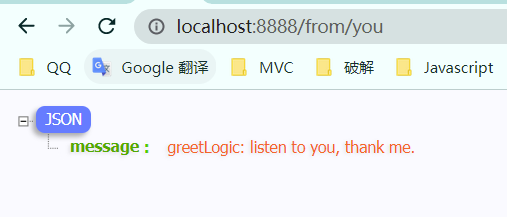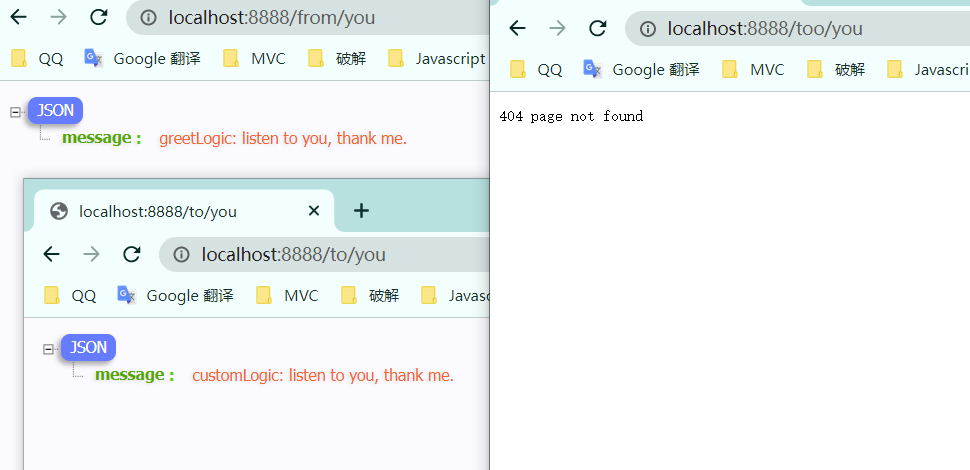您好,登錄后才能下訂單哦!
您好,登錄后才能下訂單哦!
這篇文章主要講解了“go-zero單體服務使用泛型簡化注冊Handler路由的問題怎么解決”,文中的講解內容簡單清晰,易于學習與理解,下面請大家跟著小編的思路慢慢深入,一起來研究和學習“go-zero單體服務使用泛型簡化注冊Handler路由的問題怎么解決”吧!
下載并安裝Go for Mac
驗證安裝結果
$ go version go version go1.15.1 darwin/amd64
下載Go for Linux
解壓壓縮包至/usr/local
$ tar -C /usr/local -xzf go1.15.8.linux-amd64.tar.gz
添加/usr/local/go/bin到環境變量
$ $HOME/.profile $ export PATH=$PATH:/usr/local/go/bin $ source $HOME/.profile
驗證安裝結果
$ go version go version go1.15.1 linux/amd64
下載并安裝Go for Windows驗證安裝結果
$ go version go version go1.15.1 windows/amd64
Go Module是Golang管理依賴性的方式,像Java中的Maven,Android中的Gradle類似。
查看GO111MODULE開啟情況
$ go env GO111MODULE on
開啟GO111MODULE,如果已開啟(即執行go env GO111MODULE結果為on)請跳過。
$ go env -w GO111MODULE="on"
設置GOPROXY
$ go env -w GOPROXY=https://goproxy.cn
設置GOMODCACHE
查看GOMODCACHE
$ go env GOMODCACHE
如果目錄不為空或者/dev/null,請跳過。
go env -w GOMODCACHE=$GOPATH/pkg/mod
Goctl在go-zero項目開發著有著很大的作用,其可以有效的幫助開發者大大提高開發效率,減少代碼的出錯率,縮短業務開發的工作量,更多的Goctl的介紹請閱讀Goctl介紹
安裝(mac&linux)
### Go 1.15 及之前版本 GO111MODULE=on GOPROXY=https://goproxy.cn/,direct go get -u github.com/zeromicro/go-zero/tools/goctl@latest ### Go 1.16 及以后版本 GOPROXY=https://goproxy.cn/,direct go install github.com/zeromicro/go-zero/tools/goctl@latest
安裝(windows)
go install github.com/zeromicro/go-zero/tools/goctl@latest
環境變量檢測(mac&linux)
go get 下載編譯后的二進制文件位于 \$GOPATH/bin 目錄下,要確保 $GOPATH/bin已經添加到環境變量。
sudo vim /etc/paths //添加環境變量
在最后一行添加如下內容 //$GOPATH 為你本機上的文件地址
$GOPATH/bin
安裝結果驗證
$ goctl -v goctl version 1.1.4 darwin/amd64
快速生成 api 服務
goctl api new greet cd greet go mod init go mod tidy go run greet.go -f etc/greet-api.yaml
默認偵聽在 8888 端口
偵聽端口可以在greet-api.yaml配置文件里修改,此時,可以通過 curl 請求,或者直接在瀏覽器中打開http://localhost:8888/from/you
$ curl -i http://localhost:8888/from/you HTTP/1.1 200 OK Content-Type: application/json; charset=utf-8 Traceparent: 00-45fa9e7a7c505bad3a53a024e425ace9-eb5787234cf3e308-00 Date: Thu, 22 Oct 2020 14:03:18 GMT Content-Length: 14 null
greet服務的目錄結構
$ tree greet greet ├── etc │ └── greet-api.yaml ├── greet.api ├── greet.go └── internal ├── config │ └── config.go ├── handler │ ├── greethandler.go │ └── routes.go ├── logic │ └── greetlogic.go ├── svc │ └── servicecontext.go └── types └── types.go
var configFile = flag.String("f", "etc/greet-api.yaml", "the config file")
func main() {
flag.Parse()
var c config.Config
conf.MustLoad(*configFile, &c)
server := rest.MustNewServer(c.RestConf)
defer server.Stop()
//上面的都是加載配置什么的
ctx := svc.NewServiceContext(c)
handler.RegisterHandlers(server, ctx) //此方法是注冊路由和路由映射Handler,重點在這里
fmt.Printf("Starting server at %s:%d...\n", c.Host, c.Port)
server.Start()
}RegisterHandlers在internal\handler\routes.go中
func RegisterHandlers(server *rest.Server, serverCtx *svc.ServiceContext) {
server.AddRoutes( //往rest.Server中添加路由
[]rest.Route{ //路由數組
{
Method: http.MethodGet,
Path: "/from/:name", //路由
Handler: GreetHandler(serverCtx),//當前路由的處理Handler
},
},
)
}GreetHandler在internal\handler\greethandler.go中
func GreetHandler(ctx *svc.ServiceContext) http.HandlerFunc {
return func(w http.ResponseWriter, r *http.Request) {
var req types.Request
if err := httpx.Parse(r, &req); err != nil { //請求的錯誤判斷,這個可以不用管
httpx.Error(w, err)
return
}
l := logic.NewGreetLogic(r.Context(), ctx) //GreetHandler處理函數將請求轉發到了GreetLogic中,調用NewGreetLogic進行結構體的初始化
resp, err := l.Greet(req) //然后調用Greet來進行處理請求,所以我們在GreetLogic.Greet方法中可以看到一句話// todo: add your logic here and delete this line
if err != nil {
httpx.Error(w, err)
} else {
httpx.OkJson(w, resp)
}
}
}在路由注冊時,我們如果服務越加越多,那么相對應的func xxxxHandler(ctx *svc.ServiceContext) http.HandlerFunc就要進行多次的添加,并且這個方法體內部1到5行是屬于額外的重復添加
例如:我們添加一個customlogic.go
按照命名的正確和規范性,需要在internal\logic目錄下添加customlogic.go文件,然后在internal\handler目錄下添加customhandler.go文件,并且兩個文件都添加相對應的結構體和函數等,最后在routes.go中再添加一次
{
Method: http.MethodGet,
Path: "/custom/:name",
Handler: CustomHandler(serverCtx),
},此時,我們的文件結構應該是這樣
greet ├── etc │ └── greet-api.yaml ├── greet.api ├── greet.go └── internal ├── config │ └── config.go ├── handler │ ├── greethandler.go │ ├── customhandler.go │ ├── ... │ └── routes.go ├── logic │ ├── greetlogic.go │ ├── ... │ └── customlogic.go ├── svc │ └── servicecontext.go └── types └── types.go
當單體應用達到一定的數量級,handler和logic文件夾下將會同步增加很多的文件
自Go1.18開始,go開始使用泛型,泛型的廣泛定義 :是一種把明確類型的工作推遲到創建對象或者調用方法的時候才去明確的特殊的類型。 也就是說在泛型使用過程中,操作的數據類型被指定為一個參數,而這種參數類型可以用在 類、方法和接口 中,分別被稱為 泛型類 、 泛型方法 、 泛型接口 。
我們可以利用泛型,讓在添加路由時就要固定死的Handler: GreetHandler(serverCtx)推遲到后面,去根據實際的Logic結構體去判斷需要真正執行的logic.NewGreetLogic(r.Context(), ctx)初始化結構體和l.Greet(req)邏輯處理方法
如何去做在internal\logic下添加一個baselogic.go文件,參考Go泛型實戰 | 如何在結構體中使用泛型
package logic
import (
"greet/internal/svc"
"greet/internal/types"
"net/http"
)
type BaseLogic interface {
any
Handler(req types.Request, w http.ResponseWriter, r *http.Request, svcCtx *svc.ServiceContext) //每一個結構體中必須要繼承一下Handler方法,例如customlogic.go和greetlogic.go中的Handler方法
}
type logic[T BaseLogic] struct {
data T
}
func New[T BaseLogic]() logic[T] {
c := logic[T]{}
var ins T
c.data = ins
return c
}
func (a *logic[T]) LogicHandler(req types.Request, w http.ResponseWriter, r *http.Request, svcCtx *svc.ServiceContext) { //作為一個中轉處理方法,最終執行結構體的Handler
a.data.Handler(req, w, r, svcCtx)
}將greethandler.go文件修改成basehandler.go,注釋掉之前的GreetHandler方法
package handler
import (
"net/http"
"greet/internal/logic"
"greet/internal/svc"
"greet/internal/types"
"github.com/zeromicro/go-zero/rest/httpx"
)
// func GreetHandler(svcCtx *svc.ServiceContext) http.HandlerFunc {
// return BaseHandlerFunc(svcCtx)
// // return func(w http.ResponseWriter, r *http.Request) {
// // var req types.Request
// // if err := httpx.Parse(r, &req); err != nil {
// // httpx.Error(w, err)
// // return
// // }
// // l := logic.NewGreetLogic(r.Context(), svcCtx)
// // resp, err := l.Greet(&req)
// // if err != nil {
// // httpx.Error(w, err)
// // } else {
// // httpx.OkJson(w, resp)
// // }
// // }
// }
func BaseHandlerFunc[T logic.BaseLogic](svcCtx *svc.ServiceContext, t T) http.HandlerFunc {
return func(w http.ResponseWriter, r *http.Request) {
var req types.Request
if err := httpx.Parse(r, &req); err != nil {
httpx.Error(w, err)
return
}
//通過泛型動態調用不同結構體的Handler方法
cc := logic.New[T]()
cc.LogicHandler(req, w, r, svcCtx)
}
}在internal\logic\greetlogic.go中增加一個Handler方法
package logic
import (
"context"
"net/http"
"greet/internal/svc"
"greet/internal/types"
"github.com/zeromicro/go-zero/core/logx"
"github.com/zeromicro/go-zero/rest/httpx"
)
type GreetLogic struct {
logx.Logger
ctx context.Context
svcCtx *svc.ServiceContext
}
func NewGreetLogic(ctx context.Context, svcCtx *svc.ServiceContext) *GreetLogic {
return &GreetLogic{
Logger: logx.WithContext(ctx),
ctx: ctx,
svcCtx: svcCtx,
}
}
func (a GreetLogic) Handler(req types.Request, w http.ResponseWriter, r *http.Request, svcCtx *svc.ServiceContext) { //新增方法
l := NewGreetLogic(r.Context(), svcCtx)
resp, err := l.Greet(&req)
if err != nil {
httpx.Error(w, err)
} else {
httpx.OkJson(w, resp)
}
}
func (l *GreetLogic) Greet(req *types.Request) (resp *types.Response, err error) {
// todo: add your logic here and delete this line
response := new(types.Response)
if (*req).Name == "me" {
response.Message = "greetLogic: listen to me, thank you."
} else {
response.Message = "greetLogic: listen to you, thank me."
}
return response, nil
}然后修改internal\handler\routes.go下面的server.AddRoutes部分
func RegisterHandlers(server *rest.Server, serverCtx *svc.ServiceContext) {
server.AddRoutes( //往rest.Server中添加路由
[]rest.Route{ //路由數組
{
Method: http.MethodGet,
Path: "/from/:name", //路由
Handler: BaseHandlerFunc(serverCtx,logic.GreetLogic{}),
},
},
)
}現在就大功告成了,我們啟動一下
go run greet.go -f etc/greet-api.yaml
然后在瀏覽器中請求一下http://localhost:8888/from/you

internal\logic下新增一個customlogic.go文件package logic
import (
"context"
"net/http"
"greet/internal/svc"
"greet/internal/types"
"github.com/zeromicro/go-zero/core/logx"
"github.com/zeromicro/go-zero/rest/httpx"
)
type CustomLogic struct {
logx.Logger
ctx context.Context
svcCtx *svc.ServiceContext
}
func NewCustomLogic(ctx context.Context, svcCtx *svc.ServiceContext) *CustomLogic {
return &CustomLogic{
Logger: logx.WithContext(ctx),
ctx: ctx,
svcCtx: svcCtx,
}
}
func (a CustomLogic) Handler(req types.Request, w http.ResponseWriter, r *http.Request, svcCtx *svc.ServiceContext) {
l := NewCustomLogic(r.Context(), svcCtx)
resp, err := l.Custom(&req)
if err != nil {
httpx.Error(w, err)
} else {
httpx.OkJson(w, resp)
}
}
func (l *CustomLogic) Custom(req *types.Request) (resp *types.Response, err error) { //response.Message稍微修改了一下,便于區分
// todo: add your logic here and delete this line
response := new(types.Response)
if (*req).Name == "me" {
response.Message = "customLogic: listen to me, thank you."
} else {
response.Message = "customLogic: listen to you, thank me."
}
return response, nil
}然后修改internal\handler\routes.go
func RegisterHandlers(server *rest.Server, serverCtx *svc.ServiceContext) {
server.AddRoutes( //往rest.Server中添加路由
[]rest.Route{ //路由數組
{
Method: http.MethodGet,
Path: "/from/:name", //路由
Handler: BaseHandlerFunc(serverCtx,logic.GreetLogic{}),
},
{
Method: http.MethodGet,
Path: "/to/:name", //路由
Handler: BaseHandlerFunc(serverCtx,logic.CustomLogic{}),
},
},
)
}其他地方不需要修改
我們啟動一下
go run greet.go -f etc/greet-api.yaml
然后在瀏覽器中請求一下http://localhost:8888/from/you、http://localhost:8888/to/you、http://localhost:8888/too/you

現在,在添加新的logic做路由映射時,就可以直接簡化掉添加xxxxhandler.go文件了,實際上是將這個Handler移動到了xxxxlogic.go中。
感謝各位的閱讀,以上就是“go-zero單體服務使用泛型簡化注冊Handler路由的問題怎么解決”的內容了,經過本文的學習后,相信大家對go-zero單體服務使用泛型簡化注冊Handler路由的問題怎么解決這一問題有了更深刻的體會,具體使用情況還需要大家實踐驗證。這里是億速云,小編將為大家推送更多相關知識點的文章,歡迎關注!
免責聲明:本站發布的內容(圖片、視頻和文字)以原創、轉載和分享為主,文章觀點不代表本網站立場,如果涉及侵權請聯系站長郵箱:is@yisu.com進行舉報,并提供相關證據,一經查實,將立刻刪除涉嫌侵權內容。